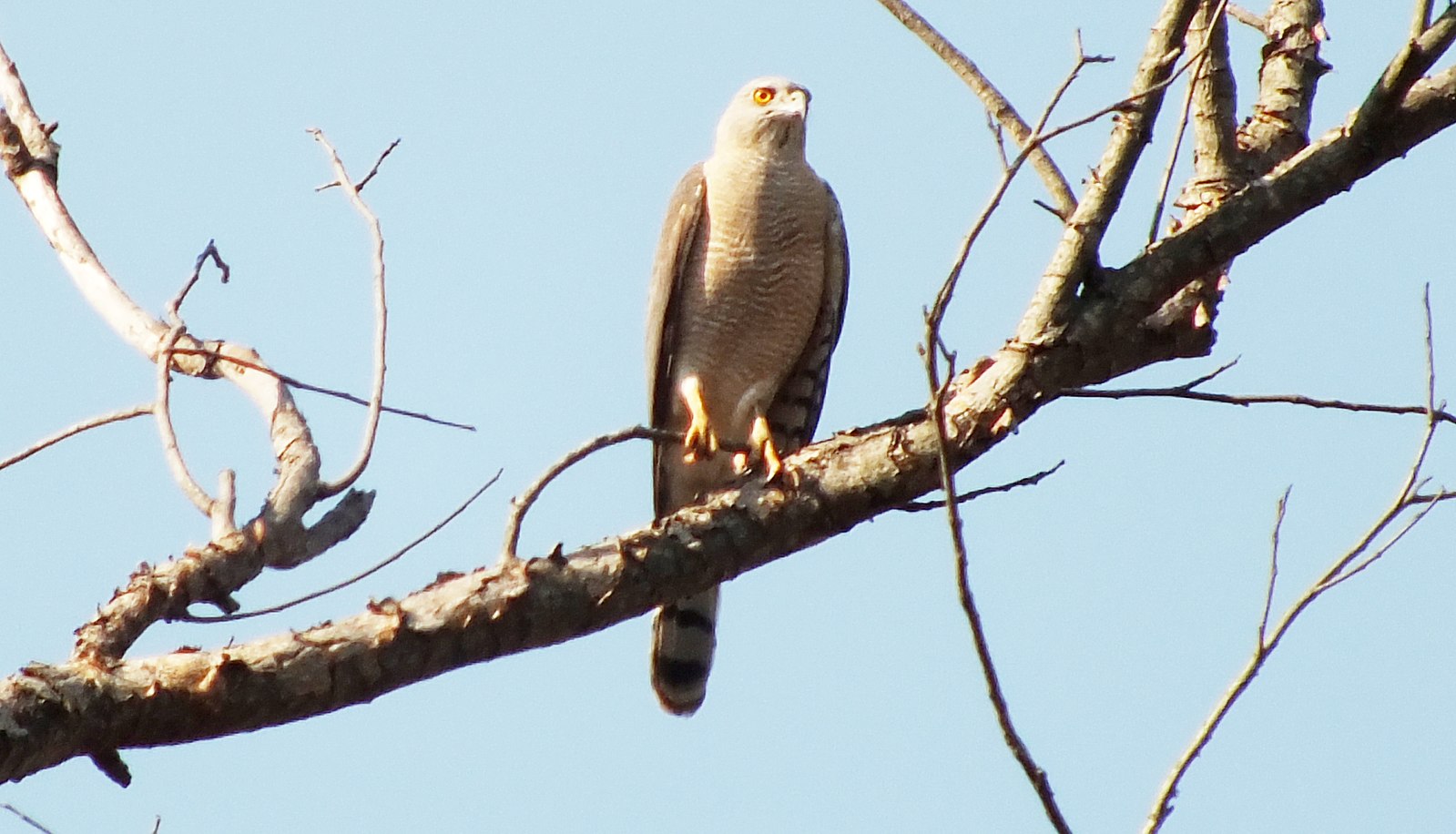The shikra (Accipiter badius) is a small bird of prey found across Asia and Africa, known for its adaptability to various environments. From dense forests to urban landscapes, this versatile raptor thrives in a wide range of habitats, making it a fascinating subject for nature enthusiasts and conservationists alike.
Preferred Habitats of the Shikra
The shikra is a highly adaptable species that can be found in a variety of habitats, including:
-
Forests: Shikras are commonly observed in both deciduous and evergreen forests, where they can hunt for small prey among the dense foliage.
-
Farmland and Orchards: These birds have adapted well to agricultural landscapes, often hunting in fields, orchards, and around human settlements.
-
Urban Areas: Surprisingly, shikras have also made themselves at home in urban and suburban environments, taking advantage of the abundance of small birds and rodents found in these areas.
-
Scrublands and Savannas: In some regions, shikras can be found in more open, arid habitats, such as scrublands and savannas, where they may prey on small reptiles and insects.
Nesting Preferences
 Image source: SHIKRA by Shiv’s fotografia
Image source: SHIKRA by Shiv’s fotografia
When it comes to nesting, shikras exhibit the following preferences:
-
Nest Construction: Shikras build a platform-like nest, similar to that of crows, using twigs and lined with grass. Both the male and female birds participate in the nest-building process.
-
Nest Placement: Shikras typically choose to nest in the upper branches of tall trees, often in the vicinity of their hunting grounds.
-
Clutch Size: The typical clutch size for shikras is 3 to 4 eggs, which are pale bluish-grey in color and speckled with black markings.
-
Incubation and Parental Care: The incubation period for shikra eggs lasts between 18 to 21 days, with the female primarily responsible for incubating the eggs. The male shikra provides food for the female and the hatchlings during this time.
Feeding Habits and Prey
Shikras are carnivorous birds of prey, with a diverse diet that includes:
-
Small Mammals: Rodents, such as squirrels and bats, are a common prey for shikras.
-
Small Birds: Shikras are known to hunt small birds, including their eggs and nestlings.
-
Reptiles: Small lizards and, occasionally, small snakes are also part of the shikra’s diet.
-
Insects: Shikras have been observed feeding on emerging winged termites and other insects.
-
Carrion: While not a primary food source, shikras have been known to feed on carrion on rare occasions.
Adaptations to Different Habitats
The shikra’s ability to thrive in a wide range of habitats is a testament to its remarkable adaptability. Some of the key adaptations that enable the shikra to succeed in diverse environments include:
-
Hunting Strategies: Shikras have developed efficient hunting techniques, such as their distinctive flight pattern of flaps and glides, which allows them to maneuver effectively in various environments.
-
Prey Diversity: The shikra’s diverse diet, ranging from small mammals to reptiles and insects, enables it to exploit a variety of food sources in different habitats.
-
Nesting Flexibility: The shikra’s ability to build nests in the upper branches of tall trees, regardless of the habitat type, provides them with suitable breeding sites.
-
Tolerance to Human Presence: The shikra’s ability to adapt to urban and suburban environments, where they can take advantage of the abundance of small prey, is a testament to their resilience and adaptability.
Conservation Efforts
While the shikra is currently classified as Least Concern on the IUCN Red List, it is essential to maintain conservation efforts to ensure the long-term survival of this species. Factors such as habitat loss and illegal trading may pose threats to shikra populations in the future.
Ongoing conservation initiatives focus on:
-
Habitat Protection: Preserving and restoring the diverse habitats where shikras thrive, including forests, farmlands, and urban green spaces.
-
Monitoring and Research: Continuous monitoring of shikra populations and research into their ecology and behavior to better understand their conservation needs.
-
Awareness and Education: Promoting public awareness and education about the importance of shikras and their role in local ecosystems.
By understanding the shikra’s diverse habitat preferences and adaptations, we can better appreciate the resilience and ecological significance of this remarkable bird of prey.
References:
– https://birdsoftheworld.org/bow/species/shikra1/cur/introduction
– https://www.thainationalparks.com/species/shikra
– https://www.oiseaux-birds.com/card-shikra.html
– https://animalia.bio/shikra?property=145


